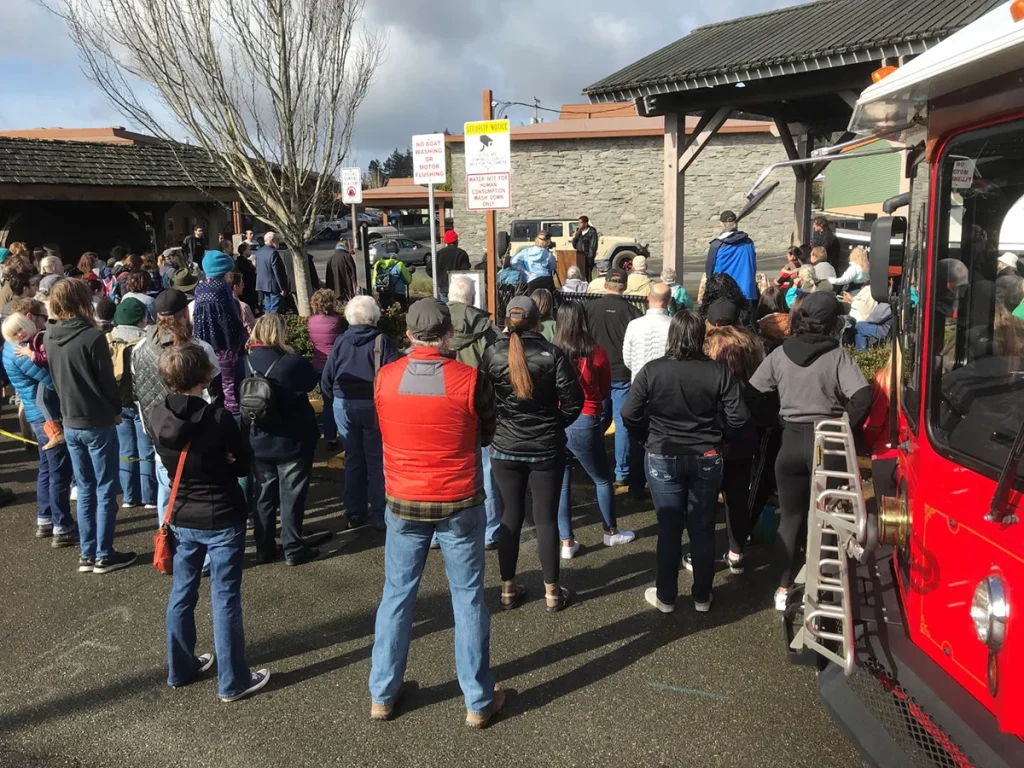Diversity, Equity & Inclusion
Museums are a vital part of how we tell the stories of who we are, who we’ve been, and how we will live together. They maintain our cultural heritage and teach us about all the ways we are different and the same. Reflecting the diversity of that heritage is a critical part of the Coos County Historical Society and The Coos History Museums’ work. We work towards highlighting diversity, equity, and inclusion as a key focus area in our strategic priorities and educational programming. Inclusion is how we move toward our equity goal, and diversity describes the breadth of our experiences and perspectives.

The Society acknowledges the acute trauma and pain experienced by African American/Black people throughout our history as a country. We support local, state and national voices of peaceful protest and change. We promote taking time to reflect on the lynching of Alonzo Tucker in 1902, the impact of George Floyd’s murder at the hands of police, and how systems of oppression are impacting every Black person in Oregon and across America. We also acknowledge the even larger picture of oppression of all people of color, from the Native People who lived on this land before the white settlers, to the immigrants of all races who were brought to this area in the early 19th century.
We encourage our citizens to learn more about state and local history regarding civil rights. The following books may be helpful in understanding regional civil rights issues:
- Law on the Bay: Marshfield, Oregon 1874-1944 by Andie E. Jensen (2010). The author shares extensive newspaper research about the crimes and law enforcement officers in old Coos Bay and includes newspaper accounts of the Alonzo Tucker lynching.
- The Coos Bay Region 1890-1944: Life on a Coastal Frontier by Nathan Douthit (2nd edition, 2005) is a book about the pioneer era. The author relied on many oral history interviews as well as historical documents and photographs. Some discussion of minority issues, including the Alonzo Tucker event, are covered.
- Made in Japan and Settled in Oregon (1990) by Mitzi Asai Loftus, formerly of Coos Bay, describes a first-hand account of the Japanese relocation camps of the WWII era.
- Paper Fight: The Coos Bay Times and the Ku Klux Klan by Jon Littlefield (2014). Discusses the competition of the two leading newspapers in Marshfield in the 1920s and the influence that KKK activities had on local and state politics. Good biographies of the Maloney brothers (who ran the Times), Charles Hall (businessman who ran for governor).
- Between Two Worlds: Chinese of Marshfield, Oregon (3rd edition) by Jon Littlefield (2016). Chinese immigrants came to Coos County to build the railroads, work in the mines and canneries, serve as cooks in lumber camps, and operate stores. The story of several Chinese families, especially the family of Gow Why, from about 1880 to 1940.
- Stars in the Dark: Coal Mines of Southwestern Oregon by Dow Beckham (1995). Discussion of the minority workers at the mines, markets and competition, coal transportation and mining industry changes.
- Uncertain Encounters: Indians and Whites at Peace and War in Southern Oregon 1820s-1860s by Nathan Douthit (2002). Investigates the Hudson’s Bay fur trading company and its relations with Indians on the South Coast, white exploration, conflicts with settlers, the removal of Indians to reservations, and the culture afterwards.
- She’s Tricky Like Coyote: Annie Miner Peterson, An Oregon Coast Indian Woman by Lionel Youst (1997) is the story of the last native Coos language speaker who lived on the Coastal Reservation in the late 1800s and later served as an informant to anthropologists in the 1930s.
